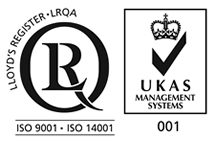
Main Products
Copyright 1998-2025 Firmetal Group All Rights Reserved. | Sitemap
Titanium metal occupies an important position in the modern industrial field with its excellent performance. Its specific strength exceeds that of all metals. It also has excellent corrosion resistance and heat resistance, which perfectly meets the stringent requirements of aerospace and defense fields for high-performance materials. With the development of science and technology and industrial upgrading, the application scope of titanium continues to expand, and its usage has steadily increased, and it has become an indispensable key metal material. Among the many types of titanium alloys, the dual-phase α-β titanium alloy Ti-6Al-4V is the most widely used, accounting for about 45% of the total amount of titanium metal. Generally, the heat treatment process of Ti-6Al-4V alloy after vacuum brazing mostly adopts annealing.
In order to further explore the performance potential of the material and improve its strength index, this study focuses on the solution aging heat treatment process of Ti-6Al-4V alloy after vacuum brazing, deeply explores the influence of this process on the material performance, and compares and analyzes it with the traditional vacuum brazing post-annealing process. At the beginning of the study, the Taguchi method was used to systematically optimize the parameters of solution treatment and aging heat treatment, aiming to obtain the optimal process conditions to maximize the hardness and tensile strength of the material. The test results show that the optimal process combination is: the aging temperature is set to 482℃, the solution treatment time is controlled at 60 min, the quenching delay time is reasonably set, the aging time is 6 h, the solution treatment temperature is 960℃, the cooling method is fan cooling, and the treatment environment is static cooling water and dry air atmosphere. After this solution aging heat treatment, the hardness of the material reaches above HRc43, the tensile strength of the round bar specimen is as high as 1165MPa, and the tensile strength of the plate specimen is also more than 1082MPa. Compared with the HRc36 hardness and 990MPa tensile strength after annealing, the performance is significantly improved.
In addition, this study also compared and analyzed the performance of Ti-6Al-4V alloy after vacuum brazing with two different fillers, titanium-based and silver-based, and then solution aging heat treatment. Among them, the vacuum brazing process parameters of titanium-based filler Ti-15Cu-15Ni are 970℃ for 15min, 30min and 60min, respectively. Under this condition, after solution treatment and aging treatment, the average shear strength of the weld interface reaches 476MPa, and the shear strength fluctuation range is 474±47MPa; the vacuum brazing temperature and holding time of silver-based filler Ag-26.7Cu-4.5Ti are 900℃×30min and 960℃× 5min/10min, respectively. The average shear strength of the weld joint interface is 470MPa, and the shear strength fluctuation range is 464.5±23.5MPa. Compared with the shear strength of Ag-26.7Cu-4.5Ti vacuum brazing without heat treatment at 200Mpa, the shear strength of Ti-15Cu-15Ni titanium-based filler after vacuum brazing annealing increased by 16% and 240%, respectively. It is worth noting that the 15Cu in the initial composition of the brazing filler Ti-15Cu-15Ni combines with 15Ni to form a specific composition of 30wwt.%. If the temperature and holding time during the brazing process are insufficient, a continuous band of compounds will remain in the center of the weld, and its segregation composition is close to the eutectic point. The composition distribution of the filler in the Ti-(Cu,Ni) brazing weld presents characteristics similar to the quasi-phase diagram. The study found that whether the post-braze heat treatment process of annealing or solution aging can effectively eliminate the continuous band of dielectric compounds in the center of the weld. At the eutectic temperature, the maximum solubility of βTi can reach 12wt.%. Through a reasonable heat treatment process, even a eutectic point or hypoeutectoid structure with a concentration of ≤6wt.% can be obtained, and this effect is not affected by the choice of brazing parameters. Even if the brazing parameters are not deliberately set to eliminate the continuous band of dielectric compounds in the center of the weld, subsequent heat treatment can still achieve this goal.